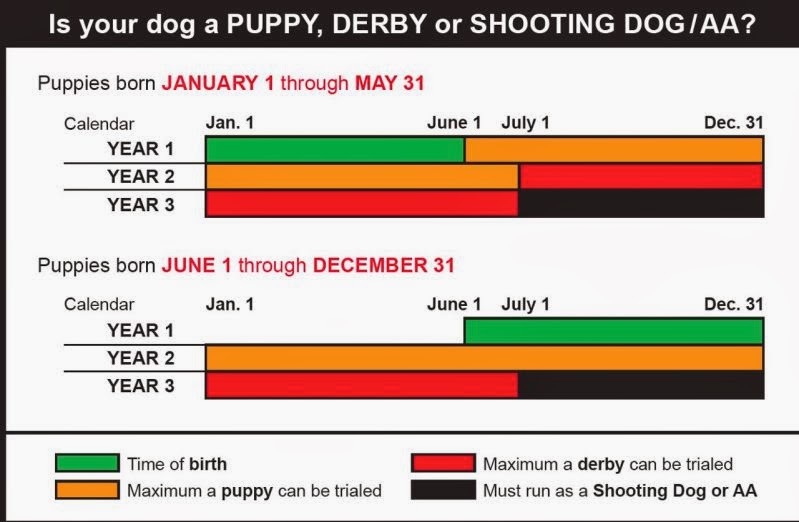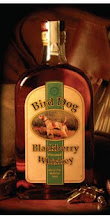
A couple of days ago I posted some information regarding the EPA's attempts to place a tax on cattle and other ruminants... well, John Yates sent me this email today, and his eloquance regarding this issue is much better than mine, so I had to post his comments... and seriously, it's not just a bunch of "hot air"... you need to read this...
As if there isn’t enough to worry about, the federal Environmental Protection Agency is telling us that cow farts are hurting the atmosphere and contributing to global warming.
You can stop laughing now.
It’s true! No kidding! EPA actually is proposing to regulate farmers and ranchers to protect us from emissions from flatulent hogs and cows.
The deadline for comments on the proposed anti-fart regulations passed quietly a week ago.
If the regulations are approved, farmers and ranchers with at least 25 head of livestock will be taxed at $175 per dairy cow, $87.50 per beef cow and $20 per hog.
Preposterous, you might say, and you’re right.
But we would call it something else. We would call it calculated and deliberate.
It stems directly from the animal rights agenda, which is aimed at eliminating animals from American life, including animals that produce meat, milk, eggs and wool. The goal is to reinvent America as a vegan vegetarian society.
We imagine that many of you are still laughing, and some of you might be wondering if we’re nuts.
It is preposterous! America loves a good t-bone, Big Macs, milkshakes and eggs fried in sausage drippings. Yum.
You are correct in thinking that Americans will not allow meat, eggs and dairy products to be removed from our lives. Surveys show that more than 95-percent of us eat meat and love every bite we can get, and we would never agree to give it up.
What you may not be thinking is that no one is planning to give us that choice. In fact, the animal rights groups’ strategy is to not even bring up the subject.
The following analysis can be seen as a case study of one major way that the animal rights agenda actually is being implemented in America today. While this example is about the planned elimination of meat, eggs and dairy products from our lives, slight variations in the same strategy also are being used to eliminate companion animals, circuses, rodeos and hunting.
The animal rights groups may be evil personified, but their leaders aren’t dumb. They know that Americans will not give up animal products voluntarily, and they aren’t going to try the direct approach. They’d lose, and they know it.
Their tactic is to indirectly and gradually take away our ability to choose to eat meat.
The strategy is to make animal products too expensive for people to use and enjoy regularly, and also to make farming unprofitable and more hassle than it’s worth.
Did you notice how the price of beef skyrocketed after the “mad cow disease” scare a couple of years ago? In about a month, most cuts of beef went up by about two dollars a pound.
The reason is that meat producers were assessed for the cost of a massive federal inspection and regulatory program, and for developing a way to track each animal from the slaughterhouse back in time to the place of its birth.
Suddenly, a halfway decent steak costs $10 a pound. If you’re lucky, you can find it on sale for $6.99 or so. Maybe.
How many people can afford that?
For most people, a juicy t-bone steak probably always has been only an occasional treat, perhaps once or twice a month. Now, it has become once or twice a year.
Have you noticed how small the meat section has become in most grocery stores? Have you noticed how small the portions have become?
I define a good steak as one pound or larger and marbled with fat. Most steaks in the grocery store are a little more than half that size today. The meat looks like the cow was anorexic and it takes a chainsaw to cut it.
Part of the reason is the artificially high price of beef, which we’ll document below. Another part of it is the health scare about cholesterol.
While cholesterol is a valid health concern for many people, the animal rights groups are exploiting this and other health issues to try to make people afraid to eat much meat.
I recall a billboard along I-35 in Dallas that was a photo of former President Ronald Reagan, linking his meat eating preferences with Alzheimer’s disease. Guess who sponsored this crude and tasteless billboard? It wasn’t the American Medical Association. People for the Ethical Treatment of Animals (PETA) paid for the billboard.
If Alzheimer’s doesn’t get you, “mad cow” disease or cholesterol will. That’s the message.
Meat already is being heavily taxed because of the brief “mad cow” disease scare. Now, EPA wants to tax it more because of cow fart emissions.
What’s next? A tax on meat because of its health risks similar to the extra taxes on cigarettes?
Yep. Give ‘em time. It won’t be long before some governmental agency proposes a big tax on every pound of meat to pay for “prevention” programs in the schools and social services agencies, mirrored after the tobacco use prevention campaigns. You’ll know the time has come when you start to see news reports about meat eaters driving up the cost of health insurance.
Enter the $20 a pound t-bone steak.
Exit meat from many people’s budgets.
That’s the plan, but it doesn’t stop here. Another big step is the National Animal Identification System (NAIS), which currently is “voluntary” but is expected to become mandatory soon.
The NAIS plan is to license every location that produces poultry and livestock, and to assign each farm or ranch owner a unique identification number (that also applies to someone who owns a horse, or a couple of 4H goats). Then, at some point, every domestic animal and bird on American farms will be microchipped to identify its place of birth, and it will be tracked on computer all the way from the farm to the grocery store.
Guess how much that is going to cost? Guess who will pay for it?
Microchips can be purchased in bulk today for about $1.50 apiece. Suddenly the $3 frying chicken sold at the grocery store for $1.39 a pound has become a $4.50 chicken.
Add in the cost of bureaucracy and additional expenses for farmers, shippers and slaughterhouses, and it becomes a $6.50 chicken.
A lot of Americans won’t be able to afford to eat much chicken at those prices. It looks like a good time to invest your money in bean burrito company stock.
And that is precisely the plan!
The bureaucratic and compliance costs of NAIA will be enormous. Imagine what it will take to constantly track a truckload of 10,000 chickens individually on computers!
What’s the justification for these costs? “Bird flu,” of course, even though no form of this poultry disease that is communicable to humans has ever been found in the Americas.
The animal rights groups know exactly what they are doing. They find something scary about meat (Alzheimer’s disease, cholesterol, “Mad Cow” disease or “bird flu”) and then work quietly behind the scenes to exploit it. They have a lot of flunky newspaper and TV reporters in their pockets, and a lot of bureaucrats are smelling a lot of job security.
And soon a frying chicken will cost $6.50…for a small one.
The other side to NAIS is the burden to farmers and the rest of the food industry. Can you imagine the cost to a farmer of microchipping 100,000 chickens a month! How many employees will the farmer have to hire? How many fines will farmers face for microchips that come out? How many people will the trucking companies and slaughterhouses have to employ to scan a few million chickens a day for microchips?
Maybe it will be a $7.50 chicken, if we’re lucky.
“What’s for supper, Honey?”
“Two chicken McNuggets and beans, Sweetheart.”
That’s the plan.
NAIS will be applied first to cattle, hogs and poultry, but also to horses. A person who owns a couple of pleasure horses would have to report to the federal computer anytime they take a ride off of their property. Lord help them if they want to travel with their horses!
Many people believe dogs and cats will be next for NAIS.
Another prong in the animal rights plan is to regulate or eliminate what they allege are cruel “factory farming” practices, such as raising hens for egg production in battery cages. Farmers defend these practices, saying that all of the known needs of chickens are being met, and also that these methods keep the cost of food reasonable so that poor and working class people can afford to have better diets.
But the farmers lost a big battle last month with the overwhelming voter approval of Proposition 2 in California. Following this referendum, almost every egg farm in California will be put out of business.
Only free range chickens, or chickens kept in traditional henhouses, will be permissible. Expect the cost of a dozen eggs to jump to $3 or so. Make it $4 when you factor in NAIS, and $5 when you add the cost of “bird flu” insurance.
Don’t worry. You’ll enjoy bean McMuffins.
Look for a law resembling Proposition 2 to become nationwide within the next few years.
Of course, you can’t have a law without also having cops to enforce it. Every one of these programs will open up every farm in America to unannounced inspections, visits by animal cruelty officers and even vigilante spies from animal rights groups.
How much money will farmers have to spend on attorney fees, paying fines for technical violations (the chicken that lost its microchip), or rebuilding facilities, upgrading computer systems and hiring new employees?
How many farmers will say “enough is enough” and throw in the towel?
How many people will be able to afford to buy milk at $8 a gallon, eggs at $5 a dozen, steaks at $20 a pounds, hamburger at $10 or sausage at $12?
We saw the same thing happen in a different form this year, when HSUS exposed cruelty at a California slaughterhouse. A video showed a downer cow being pushed with a loader. It was a cruel act by a callous employee.
But the firestorm of protest over that incident brought a host of new federal regulations and increased inspections of slaughterhouses, even though the incident was a clear violation of existing laws and regulations by a single employee. The problem could have been solved easily and simply, but it wasn’t.
Instead, your steak went up another 50-cents a pound.
“Dollars-and-cents” is the most effective strategy the animal rights groups have discovered. Who cares if you want to eat meat if you can’t afford to buy it!
Your choices become a moot point.
No matter where you look, activists and social reformers want to use money to limit your choices.
Environmentalists want gasoline to cost $20 a gallon, so you’ll use less of it.
The Humane Society of the United States (HSUS) wants a hamburger to cost $15 at McDonalds, so that you’ll eat your veggie burgers and shut up.
They want gasoline to be expensive, because this will drive up the price of corn used for animal feed and fuel to transport all of America’s foodstuffs, and thus the price of meat for consumers. If gasoline rises to $10 a gallon, you won’t be eating much meat.
HSUS wants to make you pay a few thousand dollars for liability insurance to own a gun, so that you won’t be able to afford to go hunting. Thus, hunting can be eliminated without any politician ever having to cast a vote to do it.
And they also want the price of a puppy to be about $5,000, so that only rich people will be able to afford one and the vast majority of Americans will forget what it is like to love and be loved by a dog.
Wars have been won without ever firing a shot.
And the animal rights war will be won in your pocketbook, if you don’t wise up.
The American Sporting Dog Alliance









 Open Walking Shooting Dog
Open Walking Shooting Dog
















